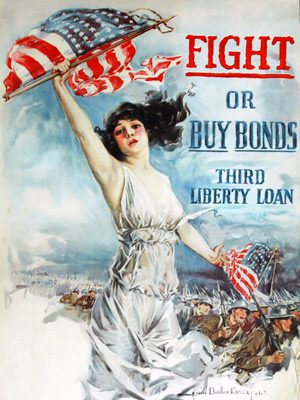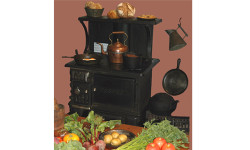It should never be forgotten that if the United States, that sleeping giant, had not been swayed to join Britain, France and Italy in what is now known as the First World War on 6 April 1917, the slaughter would certainly have dragged on for much longer than it did and the outcome may have been very different. Indeed, Germany may just have won. It took exactly a year for the US to gear up for a war that many wished to avoid, and on 6 April 1918, thousands of Americans began fighting under British and later under French command to gain battlefield experience.
If the prospect of the US entering the fray was an immense psychological boost for Britain and France, it was also the signal for a massive war effort at home, urged on by stirring and patriotic posters requesting financial and physical support for the conflict.

Though much of the attention today is on the US contribution to the fighting on the Western Front, its fledgling industrial might also focused on maritime matters, building up a large merchant fleet as exemplified by the eye-catching poster of the American eagle sending armed merchant ships on their way to Europe. Likewise the US Navy rapidly become a formidable naval force, although it never saw action against the German High Seas Fleet.
The Sawin Museum has mounted a series of displays, some contrasting iconic US and German equipment and arms, others showing the “little things” of great importance to the “doughboy,” such as his pocket Bible, mess tin and utensils, sewing kit and the kind of bed he slept on when fortunate enough to be offered one.
Seventy six citizens of Dover served their country, for which five of them gave their lives.
The Museum will be open Saturday afternoons from 1:00 p.m. – 4:00 p.m., September 23 through the end of November, or by appointment (508-785-1830) and again in the spring, April – June.


























